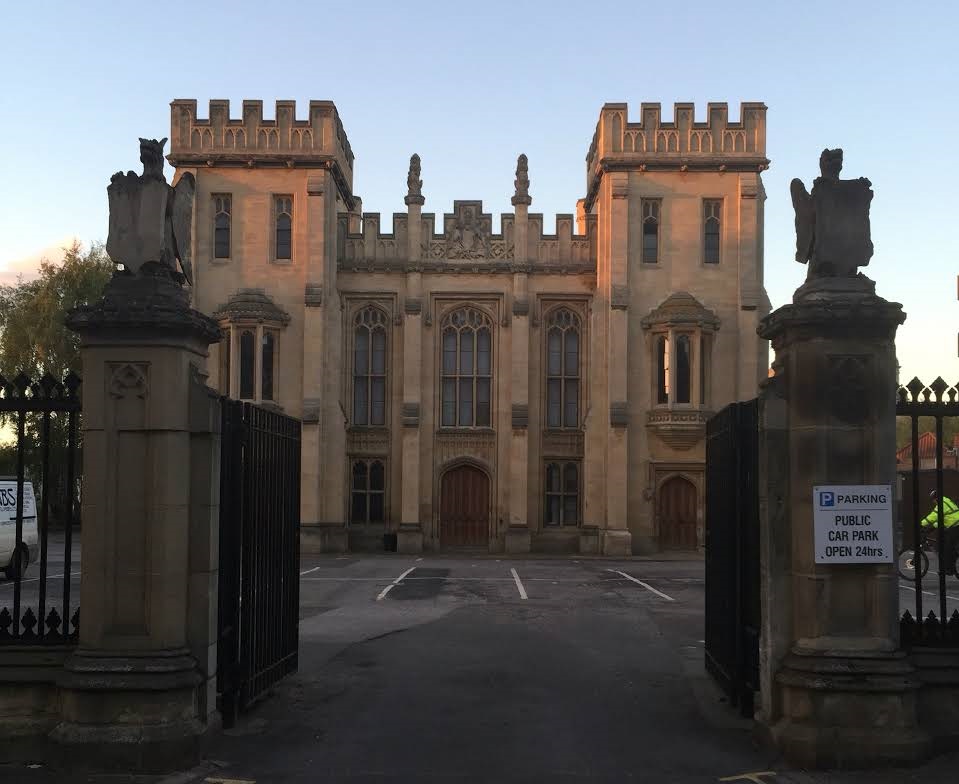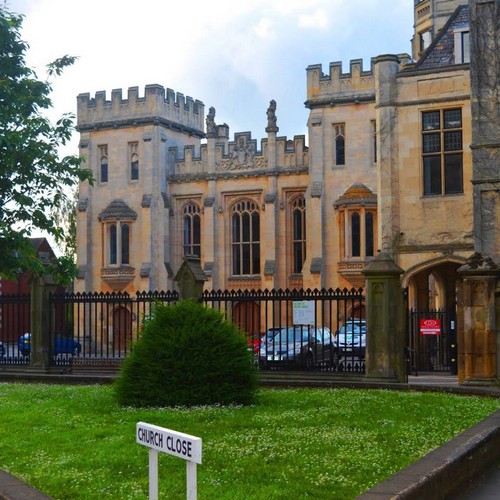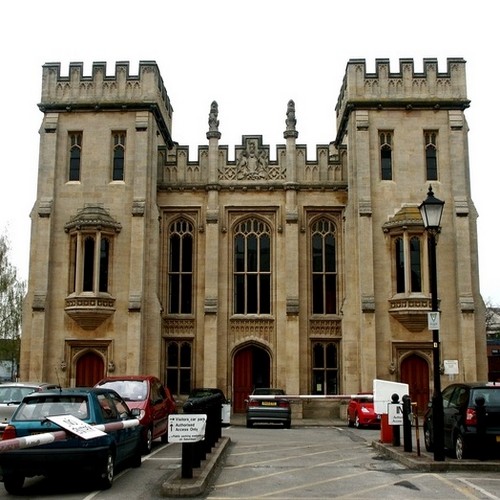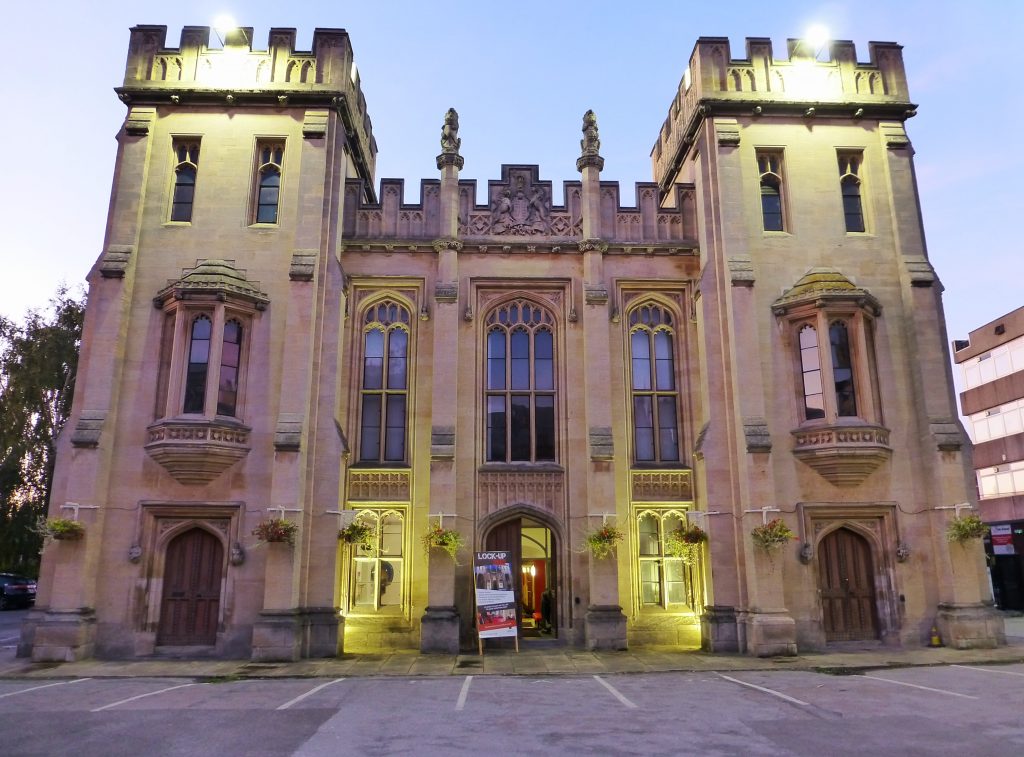Sessions House was built in 1841 to 1843 by Charles Kirk of Sleaford, in the Tudor Gothic style, in ashlar, with lead roofs. The main façade has a central section of two storeys in three bays, flanked to either side by projecting, three storey, single bay blocks. The central bays are subdivided by pilasters surmounted by tall, shield bearing lions. There are Tudor style doorways into the main block and into the flanking single bay blocks. At first floor level there is a tall, central three-light window, flanked by similar two-light windows, and beyond this, single oriel windows. At second floor level there are two pairs of narrow lights. All windows have moulded surrounds. The interior of the building retains contemporary joinery. For the full description and the legal address of this listed building please refer to the appropriate List of Buildings of Special Architectural or Historic Interest.



The Holland Quarter Sessions had sat at St Mary’s Guildhall since 1660 but in 1840 a Grand Jury called for an improvement in conditions. The Sessions House was duly built between 1841 and 1842 to designs by Charles Kirk who was also responsible for the near identical Sessions House in Spalding which was completed in 1843). The Boston Sessions House is a very good example of a mid 19th century law court, demonstrating the typically complex circulation routes, courtroom layout and suite of Magistrate’s rooms. It has a stone frontage in ashlar with brown-brick to sides and rear with stone dressings. The symmetrical frontage has a two-storey, three-bay centre, flanked by advanced tower-like wings of three storeys. It has deeply crenellated, Gothic panelled parapets, with the Royal Arms at the centre, and a cornice with carved foliation. It is rectangular, almost square, in plan and its complicated internal configuration is based on the different circulation routes for different users, all of whom were to be kept separate. The interior has survived with a remarkable degree of intactness, particularly in the areas dedicated to judicial procedures. There is an elaborately decorated Court Room, Magistrate’s Retiring and Robing Rooms, and the Magistrate’s private staircase. The interior fixtures and fittings, notably in the Court Room and Magistrate’s rooms, have survived virtually unaltered. The custody area has four cells although the original doors have been replaced. The Sessions House ceased to be used as a Magistrates Court in 2003.
Distance from The Carpenters Arms Hotel: By Car: 1 Min Drive – On Foot: 4 Min Walk

